Momentum and Arm Action: Myths and Misunderstandings

Pitching mechanics is a difficult subject to talk about, and one that I don’t touch lightly on this blog. Covering the basics of pitching mechanics like stride length, stride speed, hip/shoulder separation, and even pronation are generally not the topics I tend to discuss – at least not without a significant amount of data.
With this post, I’d like to talk about the concept of momentum as it exists in the baseball pitching delivery compared to the generally-accepted definition of the term in the world of physics (classical mechanics, to be precise).
Momentum’s real definition – long before deep analysis of pitching mechanics ever existed – is simply:
…a quantity expressing the motion of a body or system, equal to the product of the mass of a body and its velocity.
Its formula is p = mv; momentum is equal to mass times velocity.
Momentum and Arm Action
Paul Nyman described the ultimate goal of developing pitching velocity as connecting momentum in the delivery, that connective tissue are springs that are to be loaded and unloaded. Nyman’s general descriptions of intent and momentum in the delivery were (and remain) breakthroughs in understanding how velocity is really developed.
In the physical world, we are bound to the law of Conservation of Momentum, which states:
…a body at rest remains at rest and a body in motion continues to move at a constant velocity unless acted upon by an external force.
This is also known as the Law of Inertia, Newton’s First Law.
However, the fact that momentum is conserved has been twisted when it comes to baseball pitching mechanics. Nyman and others have posited that a constant flow of momentum being connected from proximal to distal is ideal for developing elite fastball velocities.
Let me be clear about this: I agree with the overall modern day understanding of the kinetic chain (proximal to distal, largest to smallest), but not with the idea that momentum is conserved in such a manner. What is being described is simply efficient sequencing of body parts, not the “elastic storage” of energy necessarily.
Taking a Look at the Data
When American Sports Medicine Institute (ASMI) studied Dr. Mike Marshall’s throwing technique in 2008, they released data that showed bucketed ranges for their “elite” and “mediocre” group pitchers to compare the “torque” group with.
If you have never seen a Dr. Marshall pitcher, then you should probably watch some of this high-speed clip of Mike Farrenkopf throwing at ASMI’s labs:
Leaving aside the unorthodoxy of Marshall’s technique, several major points arise from the data provided by ASMI.
1. Hip rotation velocity is simply not that important.
Comparing the Elite Group (85-89 MPH in lab settings) of pitchers with the Mediocre Group (74-77 MPH in lab settings) of pitchers reveals that the elite throwers have a mean maximum pelvis rotation velocity of 598.5 deg/sec while the mediocre group was at 532 deg/sec. A delta of 66 deg/sec was less than one standard deviation (522 to 675, SD of 76.5) in the elite throwers’ group for hip rotation velocity.
Other existing research corroborates this finding. In Kinematic comparisons of different pitch velocity groups in baseball using motion model method (Takahashi, Fujii, et al ISBS 2002), researchers found that peak hip rotation velocities showed no appreciable difference between high and low velocity groups, but rather timing was far more important. In fact, the high velocity group tended to reach peak hip rotation earlier than the low velocity group, which runs counter to what most modern pitching coaches teach (rotate the hips as late as possible).
Those pitching coaches that preach hip rotation velocity is important should probably review the research literature on the subject to re-evaluate their claims.
2. Momentum into Shoulder External Rotation was unimportant
When asked to describe connecting momentum into the arm action phase of the delivery, many modern pitching coaches assert that the speed of the distal wrist entering shoulder external rotation creates a greater elastic stretch of the internal rotators and “stores” energy in connective tissue. (OK, most don’t describe it with that terminology, but that’s what they mean.) This seems to make sense. Ever watch the NFL combine high jump test?
What do you see? The jumper makes an immediate countermovement (squat) and explosively drives off of the flexed knees to create the maximum amount of ground reaction forces (GRFs) to propel himself skyward.
Since shoulder internal rotation velocity is highly coupled with ball velocity (throwing a ball is mostly shoulder internal rotation + elbow extension), we should seek high angular velocities of shoulder external rotation, right?
Perhaps not. Consider that the shoulder-scapular complex is not necessarily designed to externally rotate to 170-180 degrees as shown below:
Can you get your arm in this position without throwing a ball or other object? I didn’t think so.
However, knees were designed to be flexed and extended like the high jumper in the above video, which makes that movement optimal.
The data seems to support this line of thinking, too. In the aforementioned ASMI data set, elite pitchers generate an average peak angular velocity of shoulder external rotation of 1578.5 deg/sec (1291 to 1866 +/- 1 SD 287.5). The Marshall pitchers generate an average peak value of just 405 deg/sec.
This is astronomically different – you are talking about a four standard deviation difference between Marshall pitchers and elite traditional pitchers. This is a massive outlier, and in itself it is proof that Marshall’s pitchers more or less do as he asks (minimize reverse forearm bounce, as he calls it).
Since Marshall’s pitchers have such terrible countermovement into shoulder external rotation, their ball velocity must be massively different, right? Well, this is a complicated question. The short answer is “yes,” because Marshall pitchers threw an average of 77 MPH compared to the 85-89 MPH range of elite pitchers. But mediocre pitchers threw just 74-77 MPH and their average peak angular velocity of shoulder external rotation was 1530 deg/sec. What? Read that again, and look two paragraphs up. Note that mediocre pitchers had statistically insigificantly lower countermovement into shoulder external rotation than elite pitchers!
This statistic alone should be enough to bust the idea that the speed at which the forearm lays back into external rotation is important, but it goes further than that. The faster the arm lays back in external rotation, the faster the arm must rebound into internal rotation to drive the ball to the plate. This creates a ton of torque and xpxlyometricxx stress at the elbow (dynamically stabilizing the joint against valgus stress) and the shoulder.
What’s more is this astonishing statistic – Marshall’s pitchers generated elite levels of peak shoulder internal rotation angular velocity (7899 deg/sec vs. 7547 deg/sec) AND peak elbow extension angular velocity (2509 deg/sec vs. 2413 deg/sec). Remember, these are not accelerations – they are velocities, meaning their arm was moving just as fast as the elite pitching group’s! Why didn’t this translate into better ball velocity? I covered this in another blog post titled Reviewing ASMI’s Biomechanical Analysis of Dr. Marshall’s Pitchers, where I posited the following theory (referencing the forced activation of the flexor-pronator mass in the Marshall pitching mechanic):
This is what is happening when you powerfully contract the pronator muscles in the forearm: You are very likely protecting the ligaments in the ulnar collateral ligament (UCL) while simultaneously generating equivalent IR Velocity, Elbow Extension Velocity, and related torques (which are just derivatives of acceleration of body parts; this is typically done using inverse dynamics as outlined by Zatsiorsky) – but you’re getting much lower final velocities of the baseball due to this “stiff” portion violating the kinetic chain. Additionally, due to the rotating forearm as the arm is accelerated forward, the wrist is not laid back for the final acceleration into ball release.
3. Kinetics and Joint Loading Numbers Don’t Tell the Entire Story
A biomechanics researcher occasionally opines to me, wondering why the field of baseball biomechanics is so in love with joint torques and loads. He explains that nearly all other mechanical fields do not view these numbers as absolute, but merely guiding numbers – and connections between joints and structural integrity/strength is far more relevant in their research.
Such are my feelings about absolute joint torques and loads. For example – it is well-documented that Marshall’s pitchers rarely hurt themselves while pitching (I suppose a few would find objection with this statement, but it is more or less true if you’re not being pedantic – Jeff Sparks’ UCL rupture cannot reasonably be blamed on the Marshall technique) despite throwing 2 – 10 lb. iron balls and training with up to 25+ lb wrist weights, all on top of throwing to maximum effort every single day. Yet in ASMI’s study of their pitchers, they concluded that Marshall pitchers generate equivalent torques on their shoulders and elbows as the elite pitchers did, which only makes sense given their internal rotation and elbow extension angular velocities were so high (and accelerations must have been higher given the lower rates of maximum shoulder external rotation).
How is this possible? As stated multiple times before on this blog (this long article on Joel Zumaya’s elbow is a good start), the flexor-pronator mass dynamically stabilizes the elbow against valgus force and is thought to provide additional protection to the UCL during baseball pitching. Additionally, the lack of rebound from shoulder ER to IR may be a relevant factor that was not quantifiable at the time of the study – a theory that holds some merit, since we know that bone is sensitive to loading rate when it comes to pitching mechanics.
From Whence Arm Speed Comes From
If the speed at which the arm lays back isn’t relevant to creating fastball velocity, but internal rotation angular velocity (mediocre: 5873.5 deg/sec, elite: 7547 deg/sec) and elbow extension angular velocities (mediocre: 1978.5 deg/sec, elite: 2413 deg/sec) are massively important, then how do we create a faster arm? (For lack of a better term.)
The first answer is a cop out but unfortunately a very real one: A better genetic profile. If you were lucky enough to be gifted with faster-firing muscle fibers in the relevant areas of the body (internal rotators, elbow extensors), then you will probably “naturally” throw harder than your neighbor. Since we can’t control that factor, let’s acknowledge it but ignore it.
Power and speed-strength can still be developed in the pitching arm (despite what you hear from traditional pitching coaches who think velocity is god-given), which is why weighted baseballs make up a large part of our training at Driveline Baseball. Yes, their mechanical autoregulation cues are good (and important), but developing speed-strength using under/overload training has scientific merit dating all the way back to the Soviet Sports Science projects of the early 20th century.
Additionally, a better understanding of the agonist-antagonist relationship of the pitching arm (and its surrounding musculature) can help us develop velocity indirectly. By strengthening the decelerators and improving recovery of the pitching arm in the delivery, the arm is free to move faster without inhibition; your subconscious motor control is often better than your conscious brain at determining what movements will injure the human body. This is the theory behind using wrist weights, heavy xpxlyometricxx balls, and sport-specific lifting exercises in the weight room to not only increase endurance of the muscles that help protect the arm, but to increase the contractile strength of them and possibly unlock fastball velocity in doing so.
Hardly the End Story
While few of you have made it this far into the blog post, I’m afraid to say that this is just a very topical review of one small segment of pitching mechanics. Further research and experimentation is required to get the best out of our athletes, which is why research in the Driveline Research lab never stops. I’m excited to see what additional research using EMG sensors will bring (we already have a lot of neat data) and our existing biomechanics lab with high-speed cameras.
Let me give you something to think about that we recently discovered 4-6 months ago that became vitally important in how we train our athletes. Take a look at this graph of elbow extension/flexion angular velocities from the aforementioned paper by Takahashi et al – and try to grasp the importance of the slope, magnitude, and timing of the graph when comparing high vs. low velocity pitchers. The answer may just shock you.
We’ve published other articles summarizing our research, check them out here!
Comment section
Add a Comment
You must be logged in to post a comment.
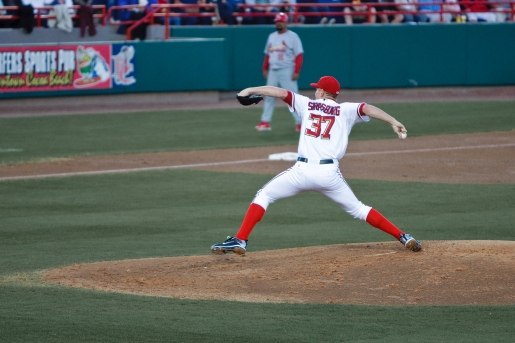
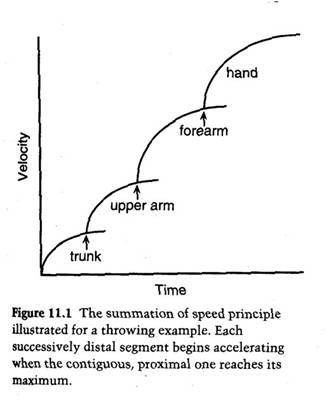
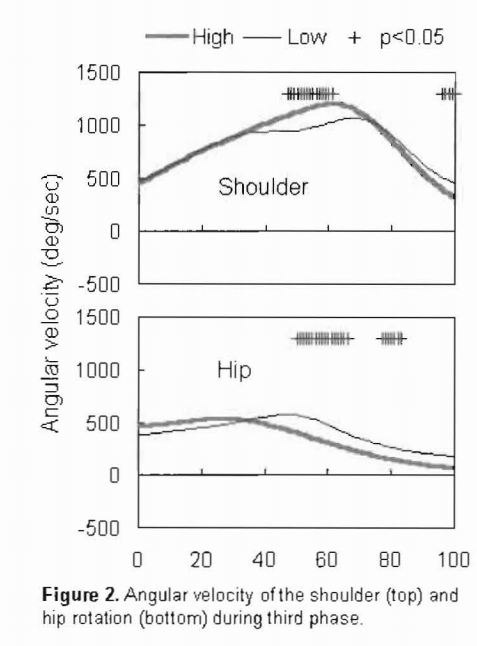
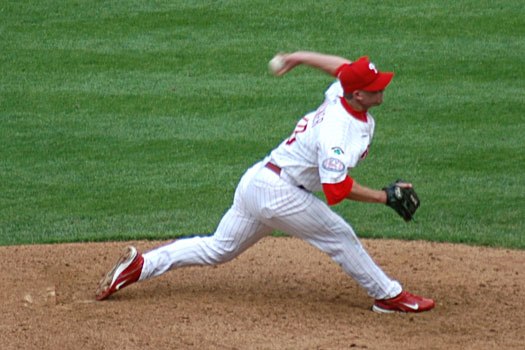
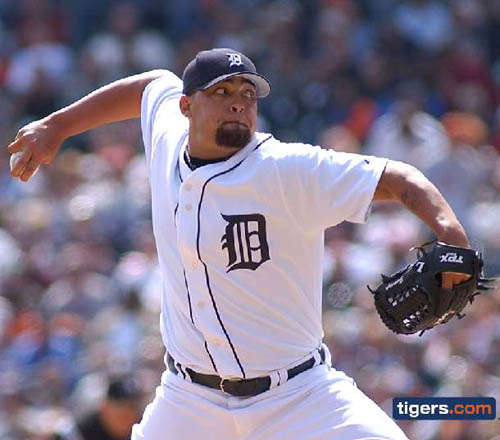
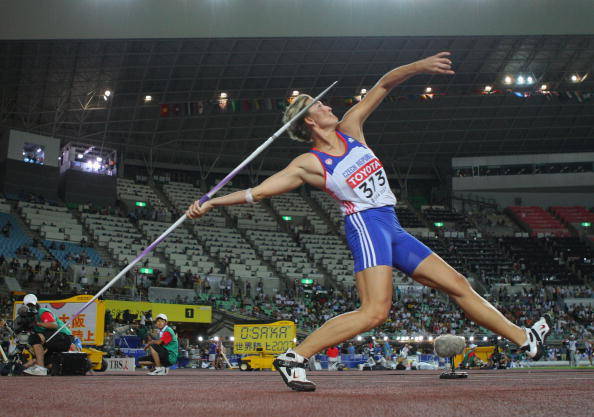
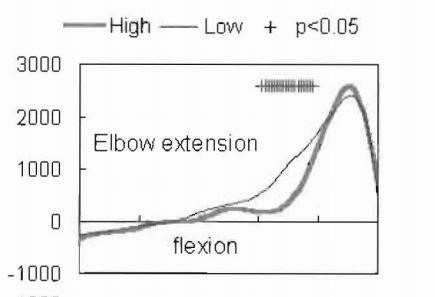
Gerty -
So… to clarify the graph at the end of the blog post, high and low velocity pitchers are putting their elbows through the same level of extension/flexion angular velocities?
Cromulent -
No. Look at the different slopes. Those are very, very different.
Cromulent -
Kyle, I have trouble following all of the biomechanics here (I get some of it), but that last graph seems to sync up well with your idea that elite velocities are produced by a violent, almost chaotic dual engine.
Tony M. -
Excellent read. You stated that the high velocity group tended to reach peak hip rotation earlier than the low velocity group. We also know that early torso rotation adds increased torque to the UCL. Isn’t that why modern pitching coaches teach kids to rotate the hips as late as possible? Do these coaches believe that late rotation creates additional torque which ultimately results in greater velocity? Confused.
Hp -
i think what the last graph is saying is that the longer you delay the arm action in the pitching motion the faster the arm moves later. In another way of speaking if you delay your hand break as late as possible and get the body moving down the mound, the arm action is delayed. your arm has to catch up at the end and thus is moving faster than if you had engaged it earlier. that is my theory at least.
Cromulent -
Not sure this is related to hand break.
Joe Mason -
Yes the arm extension is generally later with elite throwers, it might be more useful to say the mediocre throwers are extending their arms too early. Look at the shoulder angular velocity chart and sync it to the arm extension. Peak shoulder rotation is earlier than the arm action, but there is significant overlap. Early arm extension is causing the reduction in shoulder rotation. The moment of inertia in the arm extending early is dragging shoulder rotation and messing with the efficient kinetic chain and leading to pushing the ball.
drivelinekyle -
Great comment, but Joe should have points deducted for being one of the first people to enroll his son in any of my pitching training courses – back when I was doing private lessons, still!
drivelinekyle -
I can’t speak for all coaches, but it’s common to hear coaches say that 80% of the power comes from the hips (despite the fact that one of my clients with a strained ACL was able to throw 75%+ of his peak velocity from his knees) and therefore they should be rotated fast – or that momentum is passed up the chain to the torso.
Casey Weathers (first rounder 2007) is training here as I type this, and he has below-average hip angular velocity compared to even mediocre pitchers from this study. Yet he tops out at 96-97 on the mound and has hit 98.6 from a crow-hop.
Preventing early torso rotation (important for reasons you stated) is independent of hip rotation cueing. Hip rotation TIMING is the most important thing, not the magnitude of the angular velocity.
drivelinekyle -
If the arm is moving faster by delaying hand break, then velocity of external rotation goes up – but that has little (if anything) to do with ball velocity, as I pointed out above.
JP Palacio -
Dumb question but I figure it’s important. Lots of guys trying to throw harder will tend to grip the ball tighter and tense up and tighten everything up and stiffen their arm actions. This will most certainly cause a loss of ROM. So, would you advise people to be very loose with their delivery and arm action, or tense up and death grip the ball?
drivelinekyle -
Not dumb at all. You want a mostly loose arm action but there needs to be controlled tension during internal rotation and recovery/pronation. It’s a feel thing drilled into you using overload implements and good coaching.
Mitchel Taylor -
I follow the article of the study. My question would be, pre-development of the pitcher has a lot to do before being able to reach these maximum levels of velocity. The strengthing of the core,legs,hands,shoulders, with maximum flexibility developing. With your scientific idea’s in developing maximum velocity. I hear what your saying, but I believe there has to be a prerequisite.
Randy Tiefenthaler -
I started experimenting with Marshall’s delivery and training technique back in 2005. I had every pitching arm injury in college you could imagine. My son was 13 and was developing pain in the UCL area of his pitching arm. I learned everything I could from Marshall. His training and throwing methods cured my son and I was able to resurrect my throwing arm. ALTHOUGH, we found that the lower body action did not seem to offer as much consistent power, we kept fairly close to the upper body and arm action. My son went on to play for the University of Arkansas, and attracted interest from MLB. I went back to playing senior competitive baseball. Pitching with no pain and maximizing whatever potential I have left. I should say that, today at age 60 after working with the motion for 14 years, I have modified my form to look almost like a 1990 Jack Morris look alike. That was not my intent. It just turned out that way. In my college days I could get gun readings in the low 90’s and peak at 94. Today, at age 60 I can just touch 80 at times. Not bad for an old guy. And with no pain. I have tweaked and tweaked until I am convinced that I have achieved what is optimal for me. I truly believe that had I known in 1980 what I know now, and employed those changes, I would have never torn my UCL, plus I would have been able to generate about 2 mph higher average velocity.